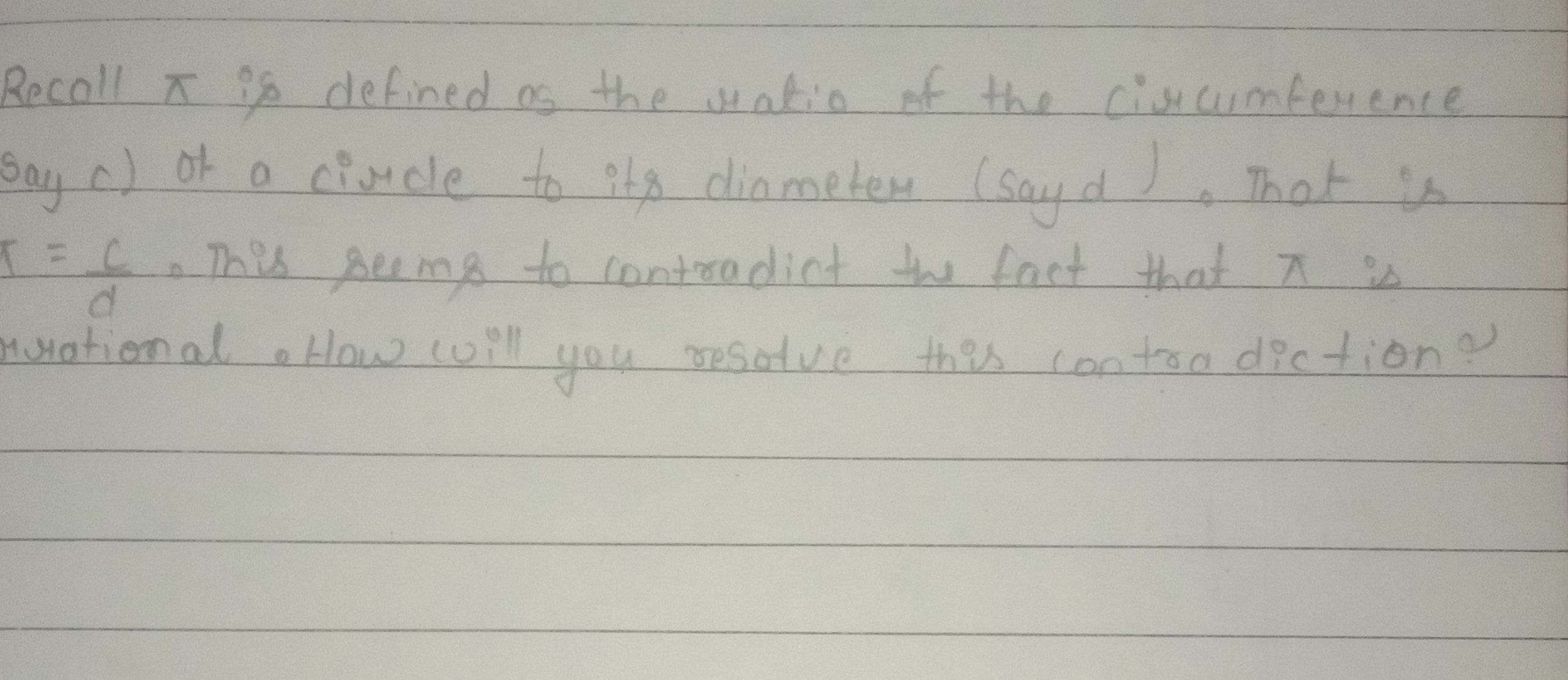Full solution
Q. Recall is defined as the ratio of the circumference (say ) of a circle to its diameter (say ). That is . This seems to contradict the fact that is irrational. How will you resolve this contradiction?
- Definition of Pi: Pi is defined as the ratio of the circumference of a circle to its diameter , which is expressed as . The apparent contradiction arises from the fact that is known to be an irrational number, yet the ratio of two lengths and seems like it should be a rational number.
- Nature of Irrational Numbers: To resolve this contradiction, we must understand the nature of irrational numbers. An irrational number is a number that cannot be expressed as a simple fraction, meaning it cannot be written as a ratio of two integers. The fact that is irrational means that although it is defined as a ratio of two lengths, these lengths cannot be both whole numbers.
- Continuous Real Numbers: The circumference and diameter of a circle are both continuous, real numbers. When we measure them, we can only approximate their values. The definition of as a ratio does not imply that it must be a ratio of two integers; it can be a ratio of two real numbers that do not form a simple fraction.
- Mathematical Approaches: Furthermore, the irrationality of is proven through various mathematical approaches, such as infinite series, and is not based solely on its geometric definition. The geometric definition is a way to understand conceptually, but the true nature of is revealed through deeper mathematical analysis.
- Resolution of Contradiction: Therefore, the contradiction is resolved by recognizing that the definition of as a ratio does not require the ratio to be between two integers. The irrationality of is a property that emerges from its infinite, non-repeating decimal expansion, which cannot be captured by a simple fraction of any two lengths, regardless of how they are measured.
More problems from Interpret parts of quadratic expressions: word problems
QuestionGet tutor help
QuestionGet tutor help
QuestionGet tutor help
QuestionGet tutor help
QuestionGet tutor help
QuestionGet tutor help
QuestionGet tutor help
QuestionGet tutor help

